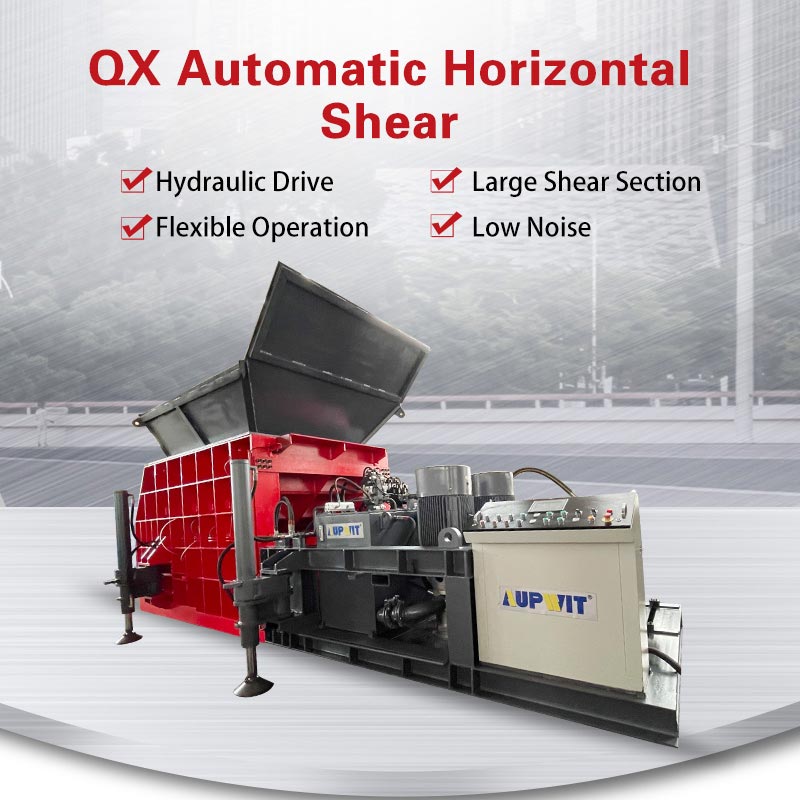To minimize the failure rate of metal balers and ensure consistent operational efficiency, a proactive maintenance and management strategy is essential. Here are key measures to achieve this:
1. Regular Preventive Maintenance
- Lubrication Management: Hydraulic systems and moving parts (e.g., cylinders, bearings, chains) are prone to wear due to friction. Implement a strict lubrication schedule using high-quality oils and greases specified by the manufacturer. For example, hydraulic oil should be changed every 2,000–3,000 hours of operation, and filters replaced quarterly to prevent contamination.
- Component Inspection: Conduct daily visual checks for leaks, loose bolts, or damaged seals. Weekly inspections should include testing pressure gauges, valves, and electrical connections. Monthly audits may involve measuring hydraulic system pressure and temperature to identify anomalies early.
- Belt and Chain Tensioning: Regularly adjust belts and chains to maintain optimal tension. Slack or over-tightened components can cause slippage, overheating, or breakage, leading to downtime.
2. Operator Training and Compliance
- Standardized Operation: Provide comprehensive training for operators on proper loading limits, cycle times, and emergency procedures. For instance, overloading a baler beyond its rated capacity (e.g., feeding 10 tons into a 5-ton machine) can overload the hydraulic pump or damage the compression chamber.
- Real-Time Monitoring: Equip balers with sensors to alert operators to issues like overheating, abnormal pressure, or misaligned bales. Train staff to respond promptly to alarms rather than overriding safety mechanisms.
- No-Nonsense Policies: Enforce strict rules against processing unsuitable materials (e.g., non-ferrous metals, oversized chunks) that can jam the feeder or damage the cutting blades.
3. Spare Parts Management and Upgrades
- Inventory of Critical Parts: Maintain a stock of frequently replaced components, such as seals, gaskets, hydraulic hoses, and wear-resistant blades. This reduces downtime by ensuring quick replacements during minor failures.
- OEM Parts Priority: Use original equipment manufacturer (OEM) parts to guarantee compatibility and durability. Aftermarket parts may save costs initially but often lead to premature wear and system instability.
- Technological Upgrades: Retrofit older balers with modern control systems (e.g., PLC automation) or advanced hydraulic pumps to improve reliability. For example, variable frequency drives (VFDs) can optimize energy usage and reduce mechanical stress on motors.
4. Environmental Control and Cleanliness
- Dust and Debris Removal: Scrap steel processing generates metal shavings, dust, and oil residues that can clog filters, valves, and cooling systems. Clean the baler’s exterior and interior weekly, using compressed air or industrial vacuums to clear accumulations.
- Climate Adaptation: In extreme temperatures, use temperature-controlled enclosures or antifreeze hydraulic fluids. In humid environments, prevent rust by applying protective coatings to exposed metal surfaces and regularly inspecting for corrosion.
5. Data-Driven Maintenance and Record-Keeping
- Condition-Based Monitoring (CBM): Install IoT sensors to track parameters like vibration, oil quality, and energy consumption. Analyzing this data can predict component failures (e.g., a failing motor’s increased vibration) before they occur.
- Comprehensive Logs: Maintain detailed records of maintenance tasks, part replacements, and 故障历史 (failure history). This helps identify recurring issues (e.g., a hydraulic cylinder that fails every six months) and adjust maintenance strategies accordingly.
6. Professional Servicing and Partnerships
- Annual Overhaul by Experts: Schedule yearly inspections by certified technicians to conduct deep diagnostics, such as hydraulic system flushing, electrical component testing, and structural integrity checks.
-
Supplier Collaboration: Partner with baler manufacturers for timely firmware updates or recall services. Their expertise can address design flaws or upgrade critical systems proactively.








